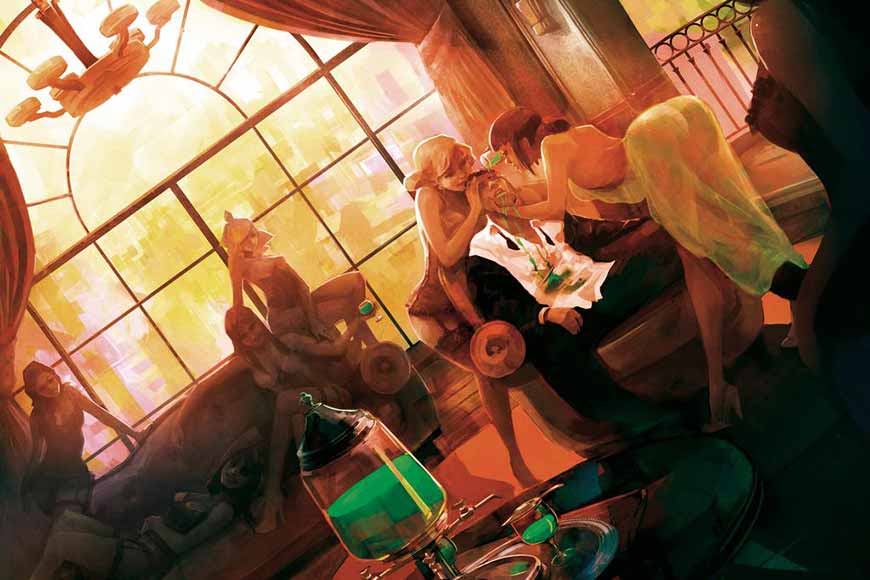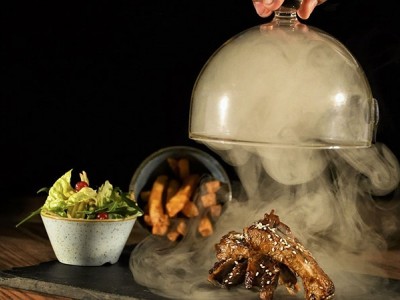Answers to the 9 Most Common Questions About Absinthe, They’re Not What You Think - Part 1
There’s so much mystery around absinthe, from all-out bans to histories about its supposed hallucinogenic properties. There’s no other spirit so complex, and at the same time so sophisticated.
From the Belle Epoque in the Parisian cafes to the recent absinthe cocktail revolution, absinthe is here to stay, and it will always keep its status as king of spirits.
We know you’re just asking for a friend, but here are the answers to the most common questions about absinthe; they might not be what you expect.
1. Where to Buy Absinthe?
Absinthe was banned in most countries for almost all the 20th century since it was considered a risk to society and was associated with social disorder and violent crimes.
Now we know it wasn’t absinthe, but alcohol abuse during the first decades of the century what caused chaos.
Today you can buy absinthe in any respected liquor store, although there are many products labelled as absinthe without properly being the original wormwood infused spirit.
The best place to buy absinthe is online at specialty absinthe stores like Absinthe Original, one of few places where you can get authentic absinthe infused with herbs, aromatics and wormwood.
2. What Absinthe Has the Most Thujone?
King of Spirits Gold Absinthe with 100mg of thujone is the absinthe with most thujone in the market. Its recipe is the closest thing to the pre-ban spirits enjoyed during the Belle Epoque too.
Thujone is the active compound in wormwood, an aromatic herb with green leaves and yellow bulbous flowers, responsible for absinthe’s alleged stimulant and psychoactive effects.
People have used wormwood in traditional medicine for thousands of years. Although its effect on our system is not fully understood, Thujone has stimulating and mood-lifting effects. Studies have yet to prove the compounds alleged psychoactive properties.
3. How Is Absinthe Made?
Absinthe is a complex spirit not dissimilar to gin. The production method starts with a grain-based mash, fermented and distilled to get a clear, high-proof, but odorless spirit.
The spirit is not absinthe yet, it must be re-distilled, this time, with all kinds of botanicals that will impart flavors and aromas.
It’s here when absinthe meets wormwood, anise and other herbs that infuse the spirit with absinthe’s characteristic flavor and aroma.
Authentic absinthe is seldom diluted or aged, so it keeps a high alcohol volume and a flavor intensity hard to beat.
If you want to learn more about absinthe production process click here to read all there is about it.
4. How Is Absinthe Served?
The traditional method of preparing and drinking absinthe is full of history and lore that make it more than a beverage, it’s an ancient custom synonym of celebration.
Pour roughly three ounces of absinthe into a heavy parfait-style stemmed glass.
Place a perforated absinthe spoon upon the rim and use it to place a sugar cube over the spirit.
Slowly drip cold water over the sugar cube, both diluting absinthe and sweetening it to perfection.
Absinthe fountains are particularly useful for dripping water in a steady stream, as you look for a proportion between two and five parts water to absinthe, depending on your preference.
Certainly at its peak in Paris, absinthe was never drunk neat or in a shot form as we often do today. Tastes for alcoholic drinks were much sweeter, consequently sugar was nearly always added. There were some famous variations on the absinthe-sugar-water combination. Ernest Hemingway drank champagne with his absinthe, in place of water, while Toulouse Lautrec famously drank his with cognac, a combination called a 'Tremblement de Terre' (Earthquake). Some people used white wine instead of water, in an 'Absinthe de Minuit' (Midnight Absinthe). The first historically recorded cocktail was reportedly made with absinthe, the 'Sazerac', in which the inside of an Old Fashioned glass is coated with absinthe before a cognac mixture is added.
Interested? We have more exciting absinthe cocktails and serving rituals.
5. What Are Absinthe Spoons For?
Absinthe spoons are the single most ornamental piece of silverware out there, as the slotted spoons often have intricate designs reminiscent of the 19th-century golden age.
The spoon holds a sugar cube in place over an absinthe glass. Cold water is then slowly poured over the sugar cube and across the spoon to sweeten and dilute the absinthe.
The absinthe spoon seems to have come into use from about the 1870s, although how widespread this was we can't be sure. Paintings and cartoons from the time featuring absinthe tended to depict (or ridicule) the Parisian bohemian lifestyle; while these spoons may have been used throughout Paris, we can't be sure when usage became established elsewhere. There are many different spoons to be seen from that time: spoons with engravings of popular absinthe brand names; commemorative spoons, like those celebrating the opening of the Eiffel Tower in 1889; spoons designed with intertwining absinthe leaves.
Absinthe spoons are also collectable pieces of art and excellent conversation starters. High-quality chrome over brass or stainless steel, absinthe spoons are great pieces for your absinthe memorabilia collection.
6. When to Drink Absinthe?
Absinthe is a strong spirit, even when diluted, but that doesn’t mean that it can be part of any special moment.
Absinthe alone is an excellent aperitif that stimulates your appetite. An after-dinner round of absinthe can spark long-lasting, engaging, and memorable conversations too.
Absinthe cocktails are superb night out drinks, and some can be mild and uplifting, perfect for a late lunch.
Absinthe’s versatility allows you to enjoy it any time of day, whenever a refreshment is in order.
7. Can Absinthe Go Bad?
Absinthe is a high-proof spirit and it’s shelf-stable. An unopened bottle of absinthe can last for decades, as long as it’s protected from the following factors:
Direct sunlight might alter the composition of alcohol and break down the aromatic compounds diluted in it.
Excessive heat can damage any spirit too, so cool, dry, storage conditions are ideal, not only for absinthe but for any other bottle you want to hold on to.
Once opened, your bottle of absinthe will remain in good condition for a long time, but eventually, oxygen will oxidize the spirit, reducing some of its fresh aromas.
Homemade spirits and infusions are much more unstable and can be potentially harmful, so never attempt to make absinthe at home.

8. How Does Absinthe Make You Feel?
Absinthe is a wonderful spirit with an intriguing history, and it’s delicious too, but it’s an alcoholic spirit whatsoever.
Consuming alcoholic drinks will make you feel energized and outgoing. Abusing them will make you sleepy and probably sick.
Although absinthe has been attributed with hallucinogenic properties, science does not back those claims.
Absinthe's effects, despite popular conception, are not due to the wormwood alone. Absinthe's constituents consist of a very delicate balance of various herbs, most of which contribute in one way or another to its intoxicating effects. It is a push-me, pull-me effect of the various herbs, as some are of a heightening effect, and others are lowering. The effect on the individual is subjective, and can best be described as a kind of heightened clarity of mind and vision, mildly ponderous and sparkling, and warmed by the effect of the alcohol. Same may even call it absinthe hallucination.
This seems to wear off after 20 or 30 minutes, leaving one with an alcohol buzz. Usually, 2-3 glasses of absinthe drink seem to do the trick.
Enjoying absinthe, especially with friends, family and the ones closest to you can be a pleasant experience, particularly for the customs and traditions involved in preparing and drinking it.
In moderation, absinthe is a beautiful spirit, but you must try it to understand it!
9. What Absinthe to Buy?
There are many counterfeit and fake absinthes in the market, spirits with little or no thujone. Real absinthe must contain at least 9 mg/l of the bioactive compound; pre-ban absinthe contained anywhere from 100 to 260 mg/l of thujone, so choose wisely, not all absinthes are created equal.
Buy the real deal - absinthe infused with wormwood without artificial colorings, flavorings or sweeteners.
Entry-level absinthes that are authentic but moderately priced like Absinthe Innocent are a great place to start your quest.
As you become familiar with the particularities of the spirit, you can proceed to more expensive and sophisticated absinthes - King of Spirits Gold Absinthe with 100mg/l of thujone, and 70% alcohol by volume is the ultimate experience.
The Only True Wisdom Is in Knowing You Know Nothing
Absinthe is an extraordinary spirit, and there’s much to learn about it. Appreciating every scent, every note as it hits your palate. Preparing the perfect glass of absinthe takes practice in a thrilling path to knowledge.
Now you know a little more about your new favorite spirit, so share your passion for absinthe with your loved ones!






